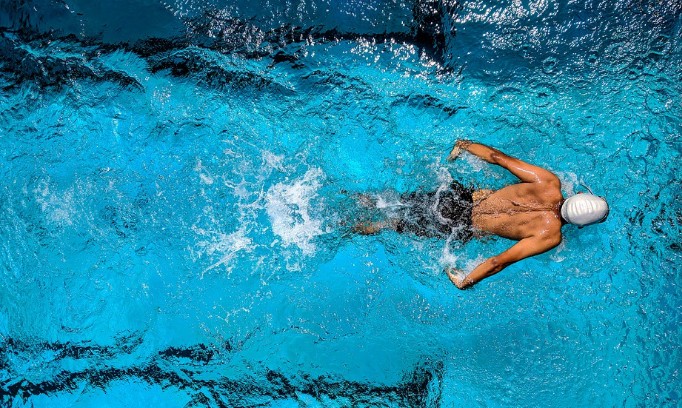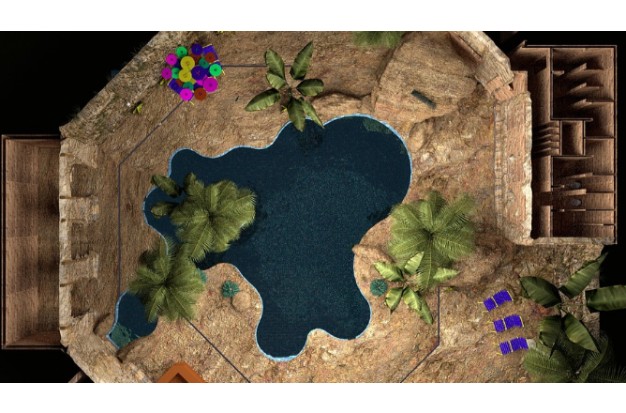What Happens If You Swim in a Shocked Pool – Be Careful
How Does Swimming in a Shocked Pool Affect You? If you swim in a pool before the chemicals that shocked it have completely dissolved, you could put your life in grave danger. The chemicals in the water will, at the very least, cause your skin and eyes to itch. You might even run the risk of poisoning and death if you were to unintentionally consume water from a pool that had recently been shocked.
What Is Pool Shock?
Without any maintenance, a pool would become unsafe as well as unsightly if left unattended. If the water is not treated, different kinds of bacteria and algae will start to grow over time. Because heat influences this process, you will find that these microorganisms will grow more quickly in the summer or in locations with generally hotter climates.
The water treatment process that stops the growth of these bacteria and algae is known as shocking a pool. Calcium hypochlorite, sodium dichlor, and potassium monopersulfate are the three principal chemicals in this mixture. Among other things, the kind of chemical you use will affect how long you have to wait before you can swim in the pool.
How Long Should I Wait Before Entering A Shocked Pool?
Calcium hypochlorite, sodium dichlor, and potassium monopersulfate are the three main chemicals used to shock swimming pools, and the amount of time you must wait before entering a shocked pool varies depending on the chemical used.
It is advised to wait 4 to 8 hours before entering the pool if you are using sodium dichlor or calcium hypochlorite. Because of this, many people prefer to shock their pools in the evening so that the chemicals have all night to become safe for swimming in.
The wait time is considerably reduced if potassium monopersulfate is used. The main benefit of using this chemical is that after it has been used to treat the pool, you only need to wait about 15 minutes before you can use it again.
Why Shock Pools With High Chlorine Concentrations?
To break down combined chlorine, organic waste, and other contaminants in the pool, use large doses of chlorine (up to 2–5 times the normal amount).
It may require more chlorine than usual to clean the pool if there is a lot of organic matter or algae in the water. Chlorine levels can be brought back to normal once the organic matter and algae have been eliminated by the chlorine.
How Can I Determine Whether Swimming In My Pool Is Safe?
The first thing you should do is adhere to the instructions on the chemicals you used to shock your pool. For your safety, make sure to carefully read and abide by the instructions.
When you’ve complied with the rules and want to confirm that the pool is safe for swimming, check the chlorine levels. It is safe to swim once the chlorine concentration falls below 5 ppm. With a testing kit, available at any pool store, you can check the chlorine levels quickly and easily. These kits are also affordable and simple to use.

How Long Should You Wait To Swim After Shocking A Pool, According To Experts?
The majority of pool technicians and homeowners who regularly shock their pools advise waiting at least 24 hours. Sometimes a few days.
Additionally, as a general rule, the longer you’ll need to wait to use your pool after shocking it, the more chemical/chlorine you used.
But it’s not a precise science. Additionally, not all experts are capable of figuring out the ideal window of time needed to pass before returning to the pool. Conditions vary from pool to pool, and the waiting time is influenced by a few different things.
Setting a deadline is not as crucial as waiting until the chlorine concentration falls to 5 ppm or less before going for a swim. It will then be secure. This could take a few hours or a few days.
To determine if swimming in your pool is safe after shocking, you must test the water first.
What Happens If You Swim In A Pool With Too Much Chlorine?
In order to prevent you and other pool users from contracting viruses that can cause illnesses like diarrhea and swimmer’s ear, chlorine is added to pools to kill germs and bacteria.
While not being too high to endanger you or other pool users, the proper chlorine levels in a pool will efficiently kill any bacteria present. Your pool’s needs for chlorine will differ depending on its size, filtration system, number of users, amount of debris, and water temperature. To start with, the levels might need a little tweaking to be right.
There is a chance that swimming in a pool with too much chlorine will cause skin damage, eye damage, or even an asthma attack, which is much more dangerous in water than it is on land. As a result, it is advised that you check the pH levels in your pool on a regular basis to make sure they are between the recommended range of 7 and 7.6 pH.
Additionally, too much chlorine in your pool can harm the tiles, concrete, and even the pipping and metal work like ladders. Any of these areas may corrode as a result of using highly chlorinated water, which will result in high repair costs.
What Doctors Say
According to an interview conducted by Health with clinical expert According to Dr. Gary Goldenberg, an assistant clinical professor of dermatology at the Mount Sinai Icahn School of Medicine in New York City, swimming in a pool with a lot of chlorine can cause dry skin and even an outbreak of eczema or psoriasis.
Other potential symptoms that might manifest include burning, pain, blisters, and redness, according to Jamie Alan, PhD, associate professor of pharmacology and toxicology at Michigan State. He added that the effects differ depending on whether you’ve inhaled chlorine and whether you came into direct contact with your skin or eyes.
Other side effects include pain, redness, watery eyes, blurred vision, and blurred vision. Chlorine poisoning can result in chest pain, fluid buildup in the lungs, wheezing, and shortness of breath.
Final Thoughts
When you add shock to your pool’s water, the chlorine concentration increases quickly, aiding in the removal of the combined chlorine molecules, also known as chloramines. Shock removes contamination and works to kill and remove mustard, green, and black algae. It also aids in the destruction of bacteria, clears pool water, and destroys other organic materials after your pool has experienced high activity.
You must shock your pool in order to protect pool users from infections. Take your time and stick to the instructions for the chemicals you decide to use when shocking your pool.
Additionally, it would be sage to inform others to wait until it is safe to go swimming. This is particularly crucial if you have young children nearby who might not understand the risks associated with swimming in a pool that has recently been shocked.
